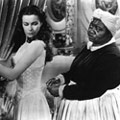Welcome to a Nexus-free, Android-free, Google-free blog. You’ll read nothing here today (okay, maybe later) about that big search engine, fancy phones, tablet computers or other stuff causing geekdom to explode with glee. Let’s talk about Avatar math and why you may present numbers to your boss, bank, partner or other important folks that aren’t 100% accurate. First things first: Avatar has indeed reached $1 billion in worldwide ticket sales. That’s a big chunk o’change.

And the movie pundits are correct. After another $150 million or so, which ought to be a cakewalk, James Cameron will have directed the two highest grossing films in movie history. Box Office Mojo is one of my favorite sites on the web. I’ve written about them before. They combine my love of movies and my love of numbers. And if you love movies and numbers, you should pop for a premium subscription or at least bookmark the place and trust them rather than some rip-and-read announcer. Because ultimately when you adjust ticket prices for inflation, Titanic is NOT the biggest grossing film of all time. That little shipwreck tale clocks in at #6.
According to the inflation calculations, the top grossing movie of all time is Gone With The Wind. The race isn’t close. The number crunchers tell us GWTW sold 37% more tickets. One-third more. And they didn’t even have Celine Dion on the soundtrack. The usual suspects are all in the top 10: Jaws, Star Wars, The Sound of Music. That’s what made The Dark Knight such a story beyond Heath Ledger’s untimely death and gritty performance. The movie is in the top 30 and passed The Jungle Book and Sleeping Beauty. Batman and The Joker almost caught Grease! And last year’s Transformers sequel caught West Side Story. Unless you’ve done a dive into film and theater history, you can’t imagine the impact of West Side Story on early 1960s America. Optimus Prime beat the Jets, the Sharks and Lenny Bernstein. Even adjusted for inflation.
So why all this talk about movies and adjusting for inflation? Two reasons: 1) The newscasters are technically correct, but gross dollars is the wrong way to measure success in this area. 2) You probably do the same thing at work with a half-dozen calculations that are permanently etched in your spreadsheet.
Take ARPU — good old average revenue per user. ARPU is going to swing like crazy depending on the industry, inflation and how many assumptions are made. Think ARPU for anything connected with financial services was pretty last year? But if I plotted the revenue from 1987 to 2009 while adjusting each new year, the comparison is finally meaningful. In 1987, when we last saw economic horror stories on the front page every day, a gallon of gasoline was 87 cents, a postage stamp was 24 cents a new car was just over $10,000. (hat tip: thepeoplehistory.com) Does that sound like our world’s pricing today? And if gas has quadrupled and postage almost doubled, shouldn’t we be making similar adjustments either looking back or looking forward? Your CFO will hate this idea. Money is money no matter the year. But make sure that time value of money is always in your calculations, even on a second worksheet if only for a legitimate comparison. Because money during the last year of President Reagan’s presidency is worth a different amount than money during the first year of President Obama’s. Not doing this may mean that you’ll credit Avatar’s blue people with generating more revenue than the little green guy in E.T. The data is technically true, but the logic is specious. And when it’s your money, you need to make sure the logic is flawless.